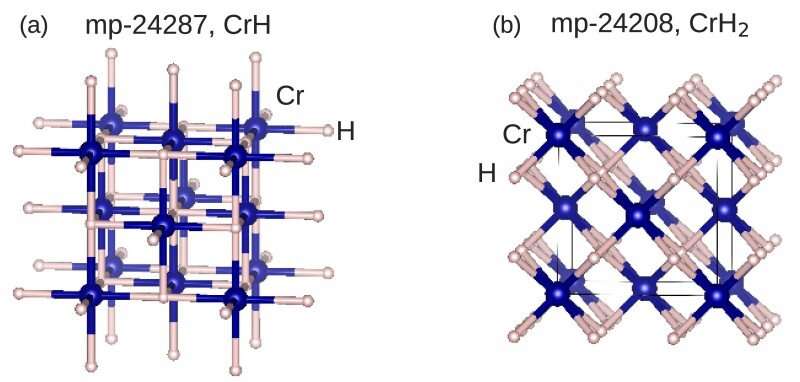This article has been reviewed according to Science X's editorial process and policies. Editors have highlighted the following attributes while ensuring the content's credibility:
fact-checked
trusted source
proofread
Finding game-changing superconductors with machine learning tools

Superconductors—found in MRI machines, nuclear fusion reactors and magnetic-levitation trains—work by conducting electricity with no resistance at temperatures near absolute zero, or -459.67°F.
The search for a conventional superconductor that can function at room temperature has been ongoing for roughly a century, but research has sped up dramatically in the last decade because of new advances in machine learning (ML) using supercomputers such as Expanse at the San Diego Supercomputer Center (SDSC) at UC San Diego.
Most recently, Huan Tran, a senior research scientist at Georgia Institute of Technology (Georgia Tech) School of Materials Science and Engineering, has worked on Expanse with Professor Tuoc Vu from Hanoi University of Science and Technology (Vietnam) to create an artificial intelligence/machine learning (AI/ML) approach to help identify new candidates for potential superconductors in a much faster and reliable way.
They recently published their work about chromium hydride (CrH and CrH2) as two possible superconductors in an article entitled "Machine-learning approach for discovery of conventional superconductors" in the journal Physical Review Materials.
What the scientists' research aims to resolve is how to reliably predict, using AI/ML approaches, the superconductivity—especially at zero pressure—where these promising materials can make their impacts on human life. Current AI/ML works are not reliable enough because the atomic-level information has not been used to justify if a particular material can exhibit superconductivity or not.
Predicting high-temperature superconductivity at zero pressure is even more challenging because suitable data needed to train the ML models are not available, especially for the current AI/ML approaches.
"The main challenge of the AI/ML method is that we need, but never have, the desired database of superconductors," Tran explained. "All previous works relied on databases that are sometimes large enough, but completely lacking in atomic-level information—which is absolutely crucial for accurate predictions."
Tran said that he and Vu first focused their work on building up a database with all the necessary atomic-level information about the materials. The key innovation of their work is that by "burying" the effects of high pressure on the atomic-level information and then using this for predicting the superconductivity, their database became large and diverse. More important, however, it contains suitable high-temperature superconductors that have been discovered during the last decade at very high pressures (e.g., as high as at the center of the Earth).
Next, the scientists developed a toolkit that combined quantum-mechanical computational methods—which are very slow yet reliable—with the ML models trained on their database, which significantly accelerated the search for possible superconductors. To demonstrate their toolkit, they searched the database of Materials Project which contains nearly 100,000 materials, discovering many possible superconductors at zero pressure—among them: CrH and CrH2. Both were verified by quantum-mechanical computations and reported in their study.
"Although the superconductivity is predicted for CrH and CrH2 at about 10–20 Kelvin (about -260°C, or -436°F), this finding is considered a promising sign for the program's viability," Tran said.
"Expanse provided us with an excellent and powerful capacity to conduct our study while the SDSC computational team assisted us on the software side so that our work was fast and efficient," Tran said. "We were able to easily use Expanse to simulate our superconducting materials and analyze this data in a reasonable time scale—thanks to the SDSC staff."
Tran said that their next steps will expand their database of superconductors—covering even more materials with both computational and experimental data.
"The main goal is to make the best-in-class ML platform to search and discover superconductors that can exhibit their amazing performance at ambient pressure and temperatures. Then, we will work with experimental experts to physically bring them to human life," Tran explained. "Of course, we will need to work closely with both the computational team at SDSC as well as experimental experts to synthesize and test our discoveries."
"When the long and ambitious crusade of the whole scientific community can finally find room-temperature superconductors at ambient conditions, we predict that many aspects of technology and human life can be transformed with ultraefficient electricity grids, ultrafast and energy-efficient computer chips, and ultrapowerful magnets that can be used to levitate trains and control fusion reactors," Tran said.
More information: Huan Tran et al, Machine-learning approach for discovery of conventional superconductors, Physical Review Materials (2023). DOI: 10.1103/PhysRevMaterials.7.054805
Provided by University of California - San Diego





















